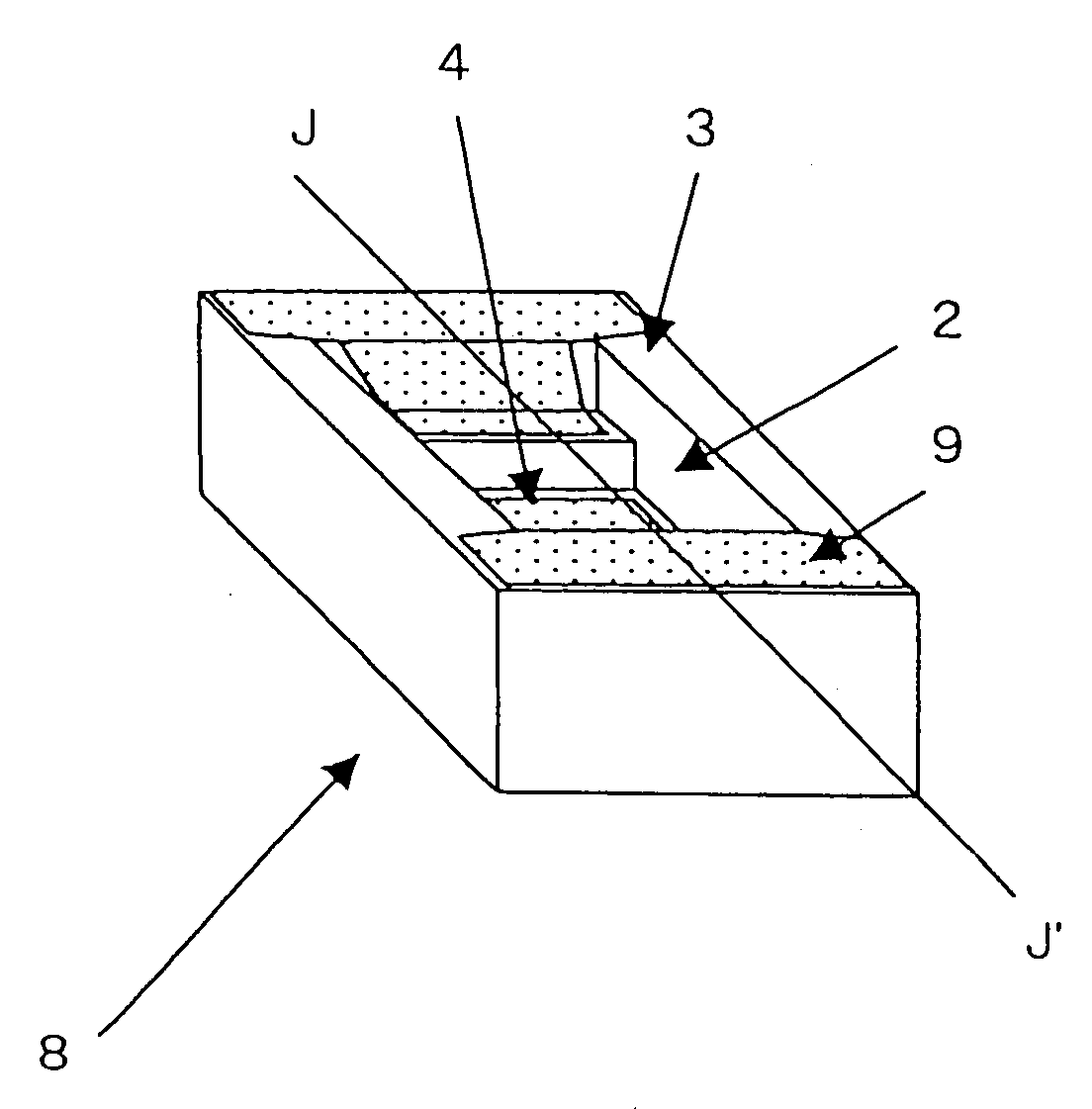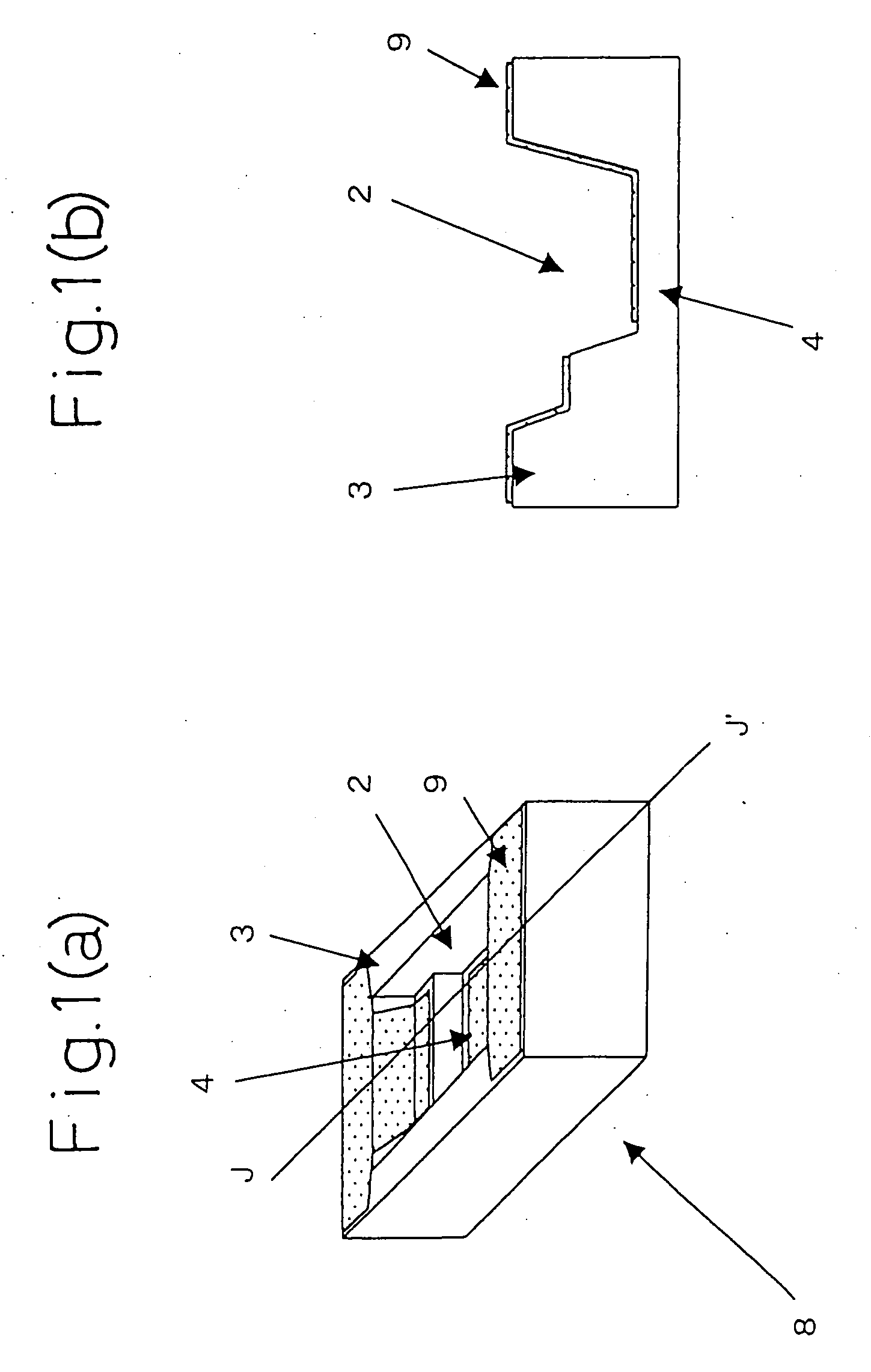Ceramic package and chip resistor, and method for manufacture thereof
a technology of ceramic packaging and chip resistor, which is applied in the direction of resistor chip manufacture, resistor details, semiconductor/solid-state device details, etc., can solve the problems of high cost, poor work efficiency, and poor work efficiency, and achieve the effect of increasing cos
- Summary
- Abstract
- Description
- Claims
- Application Information
AI Technical Summary
Benefits of technology
Problems solved by technology
Method used
Image
Examples
example 1
[0062] (1) Production of Plastic Ceramic Green Sheet Slurry
[0063] As the ceramic powder, 100 parts by weight of alumina filler-containing borosilicate glass (made by Nihon Yamamura Glass: BS-003; alumina to borosilicate glass (weight ratio)=50:50), 20 parts by weight of an ethyl acrylate / methyl methacrylate / 2-hydroxyethyl methacrylate copolymer (weight ratio: 85 / 12 / 3, Tg=−15° C., weight average molecular weight (MW) converted to polystyrene 500,000) as an acryl binder, 4 parts by weight of di(2-ethylhexyl) phthalate and 1 part by weight of a butylbenzyl phthalate as plasticizers, and 55 parts by weight of a solvent (toluene / methylisobutylketone / n-butanol=1 / 1 / 1 (weight ratio)) were mixed by a dispersion mixer so as to obtain a ceramic green sheet slurry having a viscosity of 18,000 cps.
[0064] (2) Production of Plastic Ceramic Green Sheet
[0065] The above ceramic green sheet slurry was coated on a support film (weight 400 mm, length 100 m, thickness 100 μm) composed of polyethylene ...
example 2
[0079] The same procedure was followed as in Example 1 to produce a ceramic green sheet, form a conductor layer 9, form a plurality of recesses by press forming in a regular order, without forming break grooves 5, as in FIG. 2, and calcine the ceramic green sheet to produce a ceramic cell sheet 10 composed of a plurality of ceramic cell units (i.e., ceramic package in broad sense such as plasma display panel having plurality of recesses arranged in regular order) (see FIG. 3).
example 3
[0080] Except for making the acrylic binder used in Example 1, 20 parts by weight of a lauryl methacrylate / isobutyl methacrylate / 2-hydroxyethyl methacrylate copolymer (weight ratio 60 / 37 / 3, Tg=−15° C., MW 350,000), the same procedure was followed as in Example 1 to produce a green sheet slurry. The slurry thus obtained was coated by a comma roll coater in the same way as in Example 1 to obtain a 700 μm ceramic green sheet. The ceramic green sheet thus obtained was pressed in a mold and the shape observed. Compared with Example 1, the transfer of the projecting shapes of the mold was somewhat inferior, but this was out of a level posing a problem in function.
PUM
| Property | Measurement | Unit |
|---|---|---|
| Temperature | aaaaa | aaaaa |
| Temperature | aaaaa | aaaaa |
| Temperature | aaaaa | aaaaa |
Abstract
Description
Claims
Application Information
 Login to View More
Login to View More - R&D
- Intellectual Property
- Life Sciences
- Materials
- Tech Scout
- Unparalleled Data Quality
- Higher Quality Content
- 60% Fewer Hallucinations
Browse by: Latest US Patents, China's latest patents, Technical Efficacy Thesaurus, Application Domain, Technology Topic, Popular Technical Reports.
© 2025 PatSnap. All rights reserved.Legal|Privacy policy|Modern Slavery Act Transparency Statement|Sitemap|About US| Contact US: help@patsnap.com



